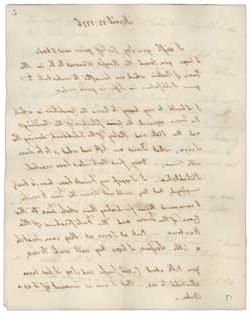Letter from John Adams to William Tudor, 12 April 1776
To order an image, navigate to the full
display and click "request this image"
on the blue toolbar.
-
Choose an alternate description of this item written for these projects:
- Main description
[ This description is from the project: Coming of the American Revolution ]
In this letter to Boston lawyer William Tudor, John Adams discusses the content of Common Sense and addresses speculation that he is the author. The pamphlet, whose author was at that point unknown, was the source of spirited debate among colonists in early 1776.
"simple facts, plain arguments, and common sense"
Common Sense is published in Philadelphia in January 1776, launching a sensational public debate on American independence. Published anonymously, everyone from John Adams to Benjamin Franklin is named as the author. No matter the scribe, colonists eagerly devour the pamphlet's exposition on King George III and Parliament and their role in colonial dissent. Actually written by Englishman Thomas Paine, the treatise does not present any new or innovative political ideas, but explains the principal attitudes towards the King and independence in simple, everyday language. Within weeks, printers from Boston to Charleston are selling their own editions to an eager public. They sell an amazing 100,000 copies of the pamphlet in just a few months! As the colonies debate Paine's spirited prose, Adams himself comments on the document and his supposed authorship in letters to friends and family.
Questions to Consider
1. What is John Adams' opinion of Common Sense? Use words or phrases from the document to support your answer.
Further Exploration
2. John Adams writes this letter in April 1776. Why is he asking about the condition of the town of Boston? What has taken place there in recent months?

